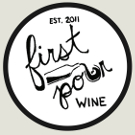Ahh, dessert, is there anything quite as wonderful? In this post
- Dr. Not Port? (or how I stop worrying about Douro and drink the wine.)
- Solera (the method, not the Toyota)
- Ep.8 Part 2 (the part where we actually cover Sherry)
With all those parenthesis out of the way, let’s begin!
Doth a Port by any other name smell as sweet?
Kind of depends who you ask. The whole thing is basically an international trademark issue. Much like sparkling wine can’t be labeled Champagne if it’s not made in Champagne, France and it compliance with the rules set by the government for champagne, Port can no longer be called Port if it’s outside the area of Portugal that makes Port.
Previously, the Portuguese government had decided that other countries could make Port, but not Porto. Porto would be the legitimate Port from Portugal. Unfortunately, the Portuguese government (and EU, and other complicated government body names go here) decided that this was unacceptably close, and so now, other countries are no longer allowed to use the designation for their Port style wines.
Well, to remedy this, there are some truly bizarre names coming out of the wood work. This week, South Africa’s powerful KWV has shown their naming prowess with “Cape Ruby” They have also shown it again with “Cape Tawny”. ‘Sticky’ and other names have been experimented with, but the situation is still rather in flex.
The easiest way to get around this, is read the bottle, or ask your local wine shop clerk to assist you if you are unsure.
Solera Method
Think of a tic – tac – toe grid (normally this more of a pyramid, but the process is the same). Imagine you have barrels in all the boxes. Each barrel has sherry in it.
- The bottom barrels are the oldest sherry. The top are the newest.
- Each bottle of sherry pulls some sherry from each level of barrels
- At a regular interval, the sherry from the higher barrels will be used to replace the taken sherry and sherry lost to evaporation. (Typically yearly, but it is a continuous interval
- This means that determining the exact vintage of a sherry is impossible, but that quality can be maintained and ensured.
The Wines
N/V KWV Cape Ruby
Port is the first example that’s been on representing a fortified wine. In this case, the wine has had extract alcohol added to stop the yeast from eating the sugar part way through fermentation. In the case of this ‘Port Style’ wine the grapes used are the same as those in Douro. They are: 40% Tinta Barocca, 40% Touriga Nacional, 10% Souzao 10% Tinta Roriz (Tempranillo).
Sight: Deep ruby
Smell: Raisin, tobacco, dried plums, with touches of hay and jammy cherries.
Sip: Tobacco and overripe strawberries hang around with a bit of blueberry and raspberry. Thick body due to the residual sugar and high alcohol [ABV: 17.5% bottle, 20% web]
Savor: Slightly raisin end, with a cigar smoke note.
Overall, it’s delicious for $8. You’d pretty much have to be out of your gourd to not at least pick up and try a bottle. It’s not going to be the most mind blowing port ever, but it’s great for keeping around the house, and enjoying with chocolate or sweets from time to time.
Price: $7.99
South Africa
N/V Osborne Sweet Oloroso Cream Sherry
Another fortified wine, this Sherry is made in the Solera Method. This style of Sherry is Cream Sherry, which was originally invented for the British, and is one of a couple of sweet styles of sherries. Thanks to blending dry Oloroso with up to 30% sweet Pedro Ximénez grapes, cream sherries tend to be a balance of dry and nutty, with sweet and toffeeish.
S: Slightly darker caramel.
Sm: Almonds and hazelnuts, raisins, butterscotch, toffee, and pecan pie.
Sip: Slightly bitter start, gets sweeter, almonds and hazelnuts start out before building in with more nuts (brazil and chestnuts) Toffee and Caramel linger. Thick body again, thanks to residual sugar and alcohol [ABV 17.5%]
Savor – Huge explosion of tree nuts, like eating a can of mixed nuts. Pecan pie flavor lingers.
Overall, it’s fairly delicious for $10. It’s not particularly complex, but most won’t mind a quick kip of it after dinner. Try it with pecan pie or other nutty caramel desserts.
Price: $9.95
Jerez, Spain
Part 2!
